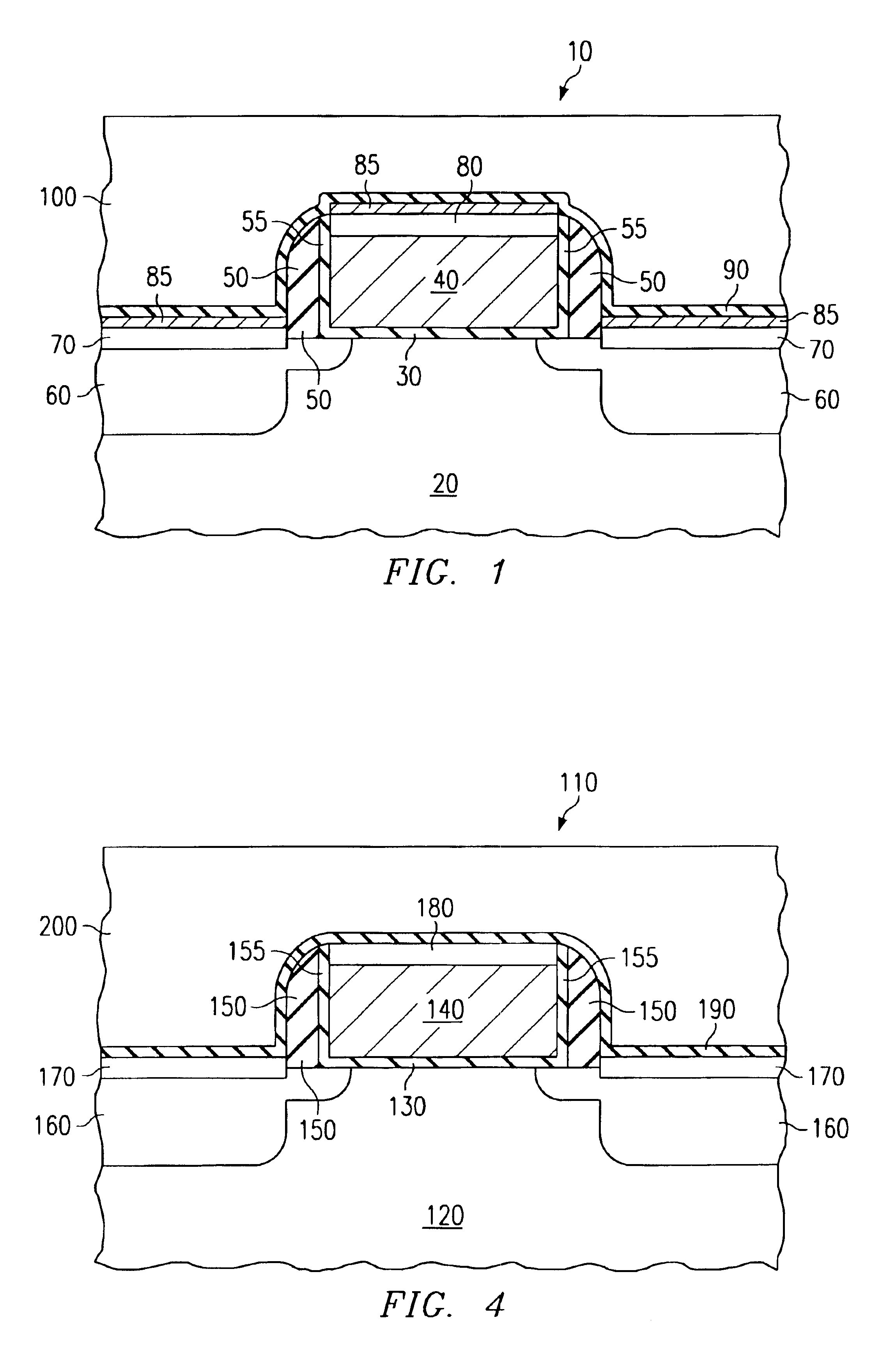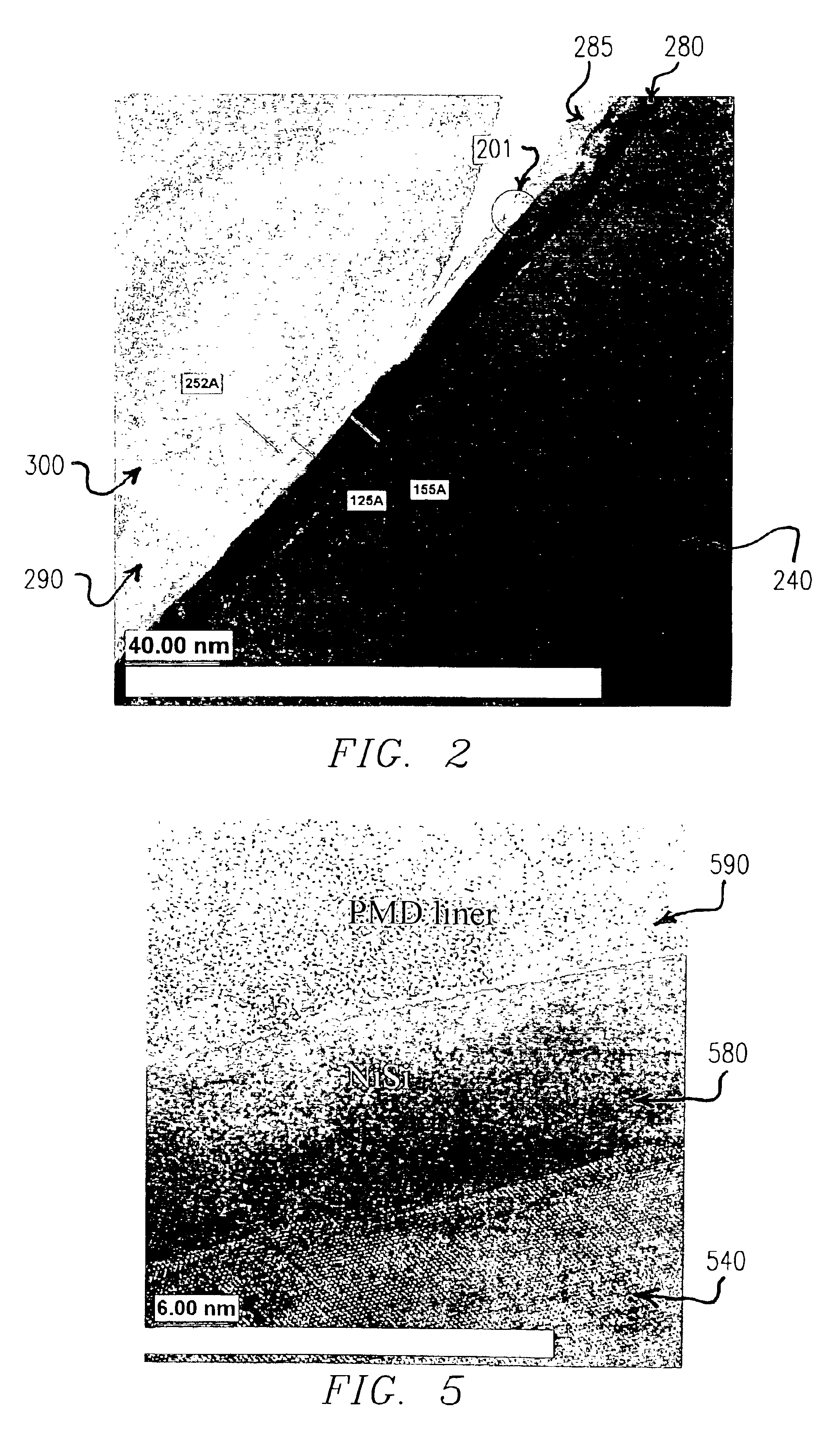Nickel silicide-silicon nitride adhesion through surface passivation
a technology of silicide and silicon nitride, which is applied in the direction of semiconductor devices, semiconductor device details, electrical equipment, etc., can solve the problems of reducing the volume of polysilicon, reducing the size of the silicon integrated circuit component, and reducing the volume of the polysilicon
- Summary
- Abstract
- Description
- Claims
- Application Information
AI Technical Summary
Benefits of technology
Problems solved by technology
Method used
Image
Examples
first embodiment
In the first embodiment, a nickel silicide is provided on the silicon substrate with the two-step heat-treatment process as described above. In order to prevent the silicon rich layer 285 as shown in FIG. 2 from forming, a process step is added to the silicon nitride deposition process. In this step, ammonia or other nitrogen carrying gaseous material such as nitrogen gas is introduced into the plasma reactor chamber. The gaseous atmosphere in the reactor chamber is substantially free of silicon species. Plasma is then induced by the application of a radio frequency signal that in term activates the nitrogen carrying gaseous material such as ammonia. The active nitrogen species reacts with the nickel silicide surface and passivates the nickel silicide surface.
With the nickel silicide surface thus passivated, silicon nitride deposition may continue as described above. The silicon nitride deposition may be carried out in the same plasma reactor chamber or in a separate reactor chamber...
second embodiment
In the second embodiment, the first step of the two-step silicidation heat-treatment process is performed as described, that is, heat-treat the substrate at 260 to 310.degree. C. to form a nickel rich alloy at source, drain and polysilicon line regions and the residual nickel is removed. Before the second step of silicidation, a metal nitride film such as titanium nitride is disposed on the substrate, covering the nickel silicide. The second step of the heat treatment is then performed at 400 to 550.degree. C. to convert the nickel rich alloy to a nickel mono-silicide alloy. During the second step of heat treatment, the nitrogen from the metal nitride film gets incorporated in the nickel silicide surface and thus passivates the nickel silicide. The titanium nitride film is subsequently removed from the surface of the substrate before the silicon nitride film deposition.
This invention is applicable to integrated circuits manufactured on substrates other than silicon, for example, on ...
PUM
| Property | Measurement | Unit |
|---|---|---|
| temperature | aaaaa | aaaaa |
| temperature | aaaaa | aaaaa |
| temperature | aaaaa | aaaaa |
Abstract
Description
Claims
Application Information
 Login to View More
Login to View More - R&D
- Intellectual Property
- Life Sciences
- Materials
- Tech Scout
- Unparalleled Data Quality
- Higher Quality Content
- 60% Fewer Hallucinations
Browse by: Latest US Patents, China's latest patents, Technical Efficacy Thesaurus, Application Domain, Technology Topic, Popular Technical Reports.
© 2025 PatSnap. All rights reserved.Legal|Privacy policy|Modern Slavery Act Transparency Statement|Sitemap|About US| Contact US: help@patsnap.com



